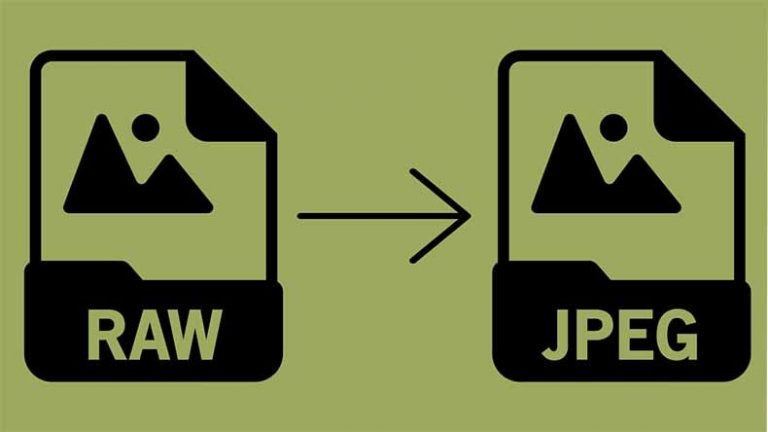Software Product Development Life Cycle – Detailed Steps
Do you know how all these software and apps you regularly use are developed? Writing a few lines of code and calling it a day is not enough. It’s far more complicated. Developers follow a detailed process called SDLC to create software products. The software product development life cycle must be followed because it contains numerous steps, each with a specific function.
If you are new to SDLC and want to learn everything about it, then read this article till the end. In this post, we will cover everything you need to use, potential difficulties you might run into, and solutions related to SDLC. Whether you’re a software developer trying to improve your abilities or a business owner interested in developing a new software product, you should know the basics of SDLC.
Introduction to the Software Product Development Life Cycle
So what is SDPLC? It is a 5 phase process that software developers use to turn an idea from the beginning to the end into a software product, ensuring that the finished product is user-friendly, dependable, and efficient.
In other words, a software product is designed, developed, tested, and deployed using a set of steps included in a framework, also known as the Software Product Development Life Cycle. The planning, design, development, testing, deployment, and maintenance phases are the first six steps of the process.
Software products must be built in a systematic and complete manner, which is why the software product development life cycle is so important. By following this procedure, errors are reduced, quality control is maintained, and a product that meets user needs is produced.
5 Stages of Software Product Development
Moving on to the five stages in the software lifecycle of a product. These five stages can be divided into the following sections depending on the size and scope of the company and the product:
- Planning
Project planning is the first step in the life cycle of developing software products. At this point, a thorough plan outlining the software product’s development, testing, and deployment must be created. A well-planned project guarantees it will go without hiccups and be finished on schedule and within budget.
To construct a successful plan, you must determine the project’s objectives, goals, and scope. This comprises specifying the function, target market, and features needed for the software. Then the software development team decides which tasks are necessary to complete the project and estimates the time and resources needed.
- Design
Next comes the very crucial design process. The development team develops a thorough plan for the software’s functionality during this phase, including the user interface design, system architecture, and database design.
Developing a thorough software requirements specification document outlining the software’s features and functionality initiates the design process. The design team then uses this document to produce a document describing how the software will be developed.
A crucial aspect of the design phase is the user interface design. The design team produces wireframes and prototypes to ensure the program is user-friendly and fulfills their needs. For the program to have a uniform appearance and feel, they also develop a style guide that lists the design components, such as color schemes, fonts, and layouts.
- Development
The third step of the software product development cycle is the development phase. Based on the design specifications produced in the previous stage, the development team starts writing the software product’s code at this stage.
Coding, debugging, and integration testing are a few sub-stages often included in the development stage. The programming languages and tools chosen during the design phase are used by developers to write the code for the software product during the coding phase.
A crucial step of the development stage is the debugging stage. To make sure the software product performs as intended, developers test the code for flaws and problems at this phase and fix them. Another essential component of the development stage is integration testing.
- Testing
The software product is tested at this stage to ensure it satisfies user requirements and performs as intended. Unit testing, integration testing, system testing, and user acceptability testing are just a few of the sub-phases commonly comprising the testing phase. The development team tests each individual piece of software to make sure it operates properly during the unit testing phase.
The functioning of the software is tested during integration testing with other system components. Testing the program to ensure it operates appropriately is known as system testing. The last stage of testing is user acceptance testing. The end users test the software at this phase to ensure it satisfies their needs and is simple.
- Deployment
The software product development cycle ends with the deployment step. The software product is made available to end users at this stage. The deployment stage involves the development team deploying the software to the production environment, setting it up for use, and providing end users with documentation and support.
During the deployment stage, the development team must carefully plan and coordinate with other stakeholders, such as the operations teams, project managers, and end users. The software’s development team ensures that it is deployed properly and satisfies user needs.
Best Practices for Successful Software Product Development
Now that you know about the phases of SDLC, let’s discuss the best approaches to creating successful software products through it. Among the top recommendations for effective software product development are:
- Before beginning development, the project’s scope, objectives, and needs must be clearly stated.
- To satisfy their demands, include stakeholders in the development process, such as users, clients, and business owners.
- To assure consistency and quality throughout the project, use a structured method of development, such as the Software Product Development Life Cycle (SPDLC).
- To identify and address problems as they arise, incorporate testing and quality assurance into each level of development.
- Use version control technologies to enable effective collaboration and smooth communication among team members.
- Take feedback into consideration as you make changes to the product to satisfy the needs of the market and evolving requirements.
- To stay current with the newest technologies and trends, promote an environment that values innovation and continual learning.
By adhering to these best practices, software development teams can improve their chances of producing a popular, excellent, and profitable software product.
Importance of the Software Development Life Cycle (SDLC) Framework
An outline of the many steps in the software product development process is provided by the Software Development Life Cycle (SDLC) framework. Software development teams follow processes or phases to design, build, test, and deliver software products.
The SDLC is divided into stages, each with goals and deliverables. Often, the stages are cycled through several times by the development team to polish and enhance the software product.
It offers an organized method for developing software, ensuring the development team adheres to a standardized and replicable procedure. This enhances collaboration and communication between the development team and other stakeholders while lowering development costs and time and improving the quality of the software product.
The SDLC stages and their order may vary depending on the software development approaches, such as Agile and Waterfall. But creating high-quality software that satisfies the user’s needs is always the SDLC’s primary goal.
Difference Between SDLC and PDLC
The Software Product Development Life Cycle (SPDLC) is a related but distinct concept from the Software Development Life Cycle (SDLC). The software development life cycle (SDLC) is a framework that describes the many steps involved in creating software, including planning, designing, developing, testing, and deploying. It offers a disciplined method for creating software, ensuring the team uses a dependable and repeatable procedure.
The SPDLC, on the other hand, is a framework that describes the many phases of software product development, from ideation to release and beyond. It comprises all of the SDLC and extra stages, including ideation, market research, product release, and product retirement.
The SDLC is a subset of the SPDLC. The SPDLC is more thorough and considers the full software product’s life cycle, including market research, product introduction, and product retirement. The SPDLC considers both the technical and business aspects of software product development.
6 Benefits of Software Development Lifecycle
The Software Development Life Cycle (SDLC) offers several advantages for software development projects. For example,
- Improved Quality: The SDLC offers an organized method for developing software, which helps guarantee that the finished product is high caliber and satisfies the user’s needs.
- Improved Communication: The SDLC promotes improved communication and collaboration between the development team and other stakeholders, such as the product owner, business analysts, and testers.
- Cost Savings: By identifying and resolving problems early in the development process, the SDLC can help lower the overall development cost.
- Faster Time to Market: The SDLC offers a standardized method for developing software, which helps to speed up the process and shorten the time it takes to release the software product.
- Better Risk Management: By identifying and reducing risks early in the development process, the SDLC can significantly lower the probability that a project will fail.
- Improved Scalability: The SDLC offers a structured method for developing software, which helps to guarantee that the software product is scalable and can handle future changes and updates.
In short, the SDLC offers a disciplined method for developing software that aids in making sure the finished product is of good quality, delivered on schedule, and satisfies user needs.
Conclusion
From conception to release and beyond, the Software Product Development Life Cycle (SDLC) offers a thorough approach to creating a software product. In addition to the many stages of the Software Development Life Cycle (SDLC), such as planning, design, development, testing, and deployment, the SPDLC includes stages like ideation, market analysis, product release, and product retirement.
The SPDLC ensures that software development teams consider the technical parts of software development and the commercial factors, such as market research and product launch, to create a compelling and lucrative software product.
FAQs
Is SDLC a Waterfall or Agile?
Depending on the needs of the project and the team’s experience, either the waterfall or agile methodology can be used to implement the SDLC.
How Is SDLC Different From Scrum?
Planning, design, development, testing, and deployment are just a few stages of the system software development method known as the SDLC. On the other hand, Scrum uses an incremental and iterative approach to manage and complete large projects, including software development.
How Many Types of the Software Life Cycle Are There?
Software development life cycles come in various forms, including the Waterfall, Agile, Spiral, and V-shaped models. The project needs, and team experience determines which model should be used.
What Are the 6 Types of Software Development Life Cycles?
The Waterfall, Agile, Spiral, V-shaped, Iterative, and Prototype models are some of the most well-known software development life cycles. The team’s experience and the project’s requirements will determine which model is used. Each model has its approach and characteristics.







